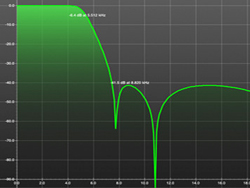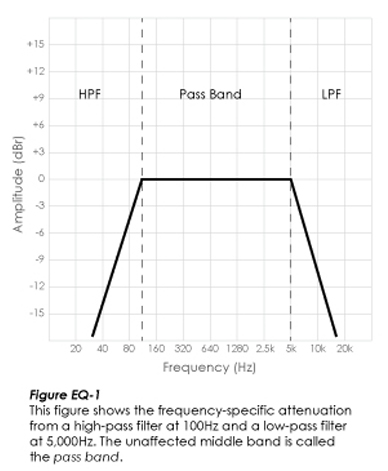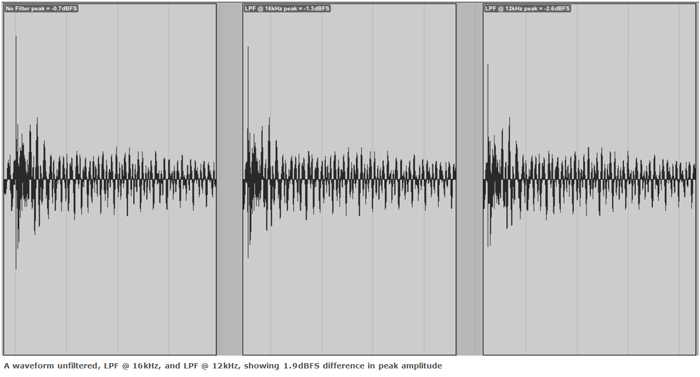An audio pass filter attenuates an entire range of frequencies. There are two types of pass filters (Figure 1, below).
A high-pass filter (HPF) attenuates content below a cutoff frequency, allowing higher frequencies to pass through the filter. A low-pass filter (LPF) attenuates content above a cutoff frequency, allowing lower frequencies to pass through the filter.
The slope of filter attenuation is usually quantified in decibels per octave. For example, a 12 dB per octave HPF located at 100 Hz would accomplish 12 dB of relative attenuation at 50 Hz, and 24 dB at 25 Hz. This slope would continue to extend into very low frequencies, effectively attenuating signal to an indiscernible amplitude.
Pass filters are simple, ubiquitous audio tools that should be a part of ever engineer’s basic toolbox. Here are some effective ways to incorporate pass filters into your recording and mixing technique.
Signal v. Noise
In physical terms, signal and noise are not separate components of an audio signal. Though you may choose to think of them as discrete elements, noise is a part of every waveform.
Some types of noise components are relatively isolated to a specific frequency range. In those cases, pass filters can be excellent tools to reduce of eliminate the offending signal content.
For example, high-pass filters are often used in studio recording and sound reinforcement to attenuate extraneous low-frequency content like mechanical rumble or vocal plosives. By choosing a filter with a cutoff frequency below the fundamental frequency range of the program, a HPF can be used to differentiate between program signal and low-frequency noise.
Low-pass filters can also be used to eliminate unwanted, counter-productive bandwidth. One common example is using a LPF to establish the limited bandwidth of a low frequency transducer, like a ‘sub’ mic on a kick drum. Other examples include the entire universe of subtractive synthesis.
Course Tone Control
The subjective quality that we call ‘tone’ or timbre is a result of the harmonic content of a signal. Harmonic content is the balance, or relative loudness relationships, between the component harmonics of a complex waveform. An equalizer changes tone by attenuating or amplifying a limited frequency range within a complex waveform.
As described above, audio pass filters establish the limited audible bandwidth of a signal. This can have very useful tonal results.
Low-pass filters are used in music production as both fixed and modulated tone controls. The most transient elements of any waveform are the direct contribution of that waveform’s highest harmonic content. Consequently, dramatic changes in tone can be achieved by changing the cutoff frequency of a LPF (Figure 2).
Pass filters are often used in combination with shelving EQ to check or limit the effect of the shelf beyond the filter’s cutoff frequency. For example, some engineers like to use a Baxandall type shelving EQ to boost very high “air band” frequencies. Placing a low-pass filter after the high-frequency boost in signal flow will provide additional control over the tonal effect.
The very same technique can be used to shape low-frequency content, in this case matched with a high-pass filter.


















